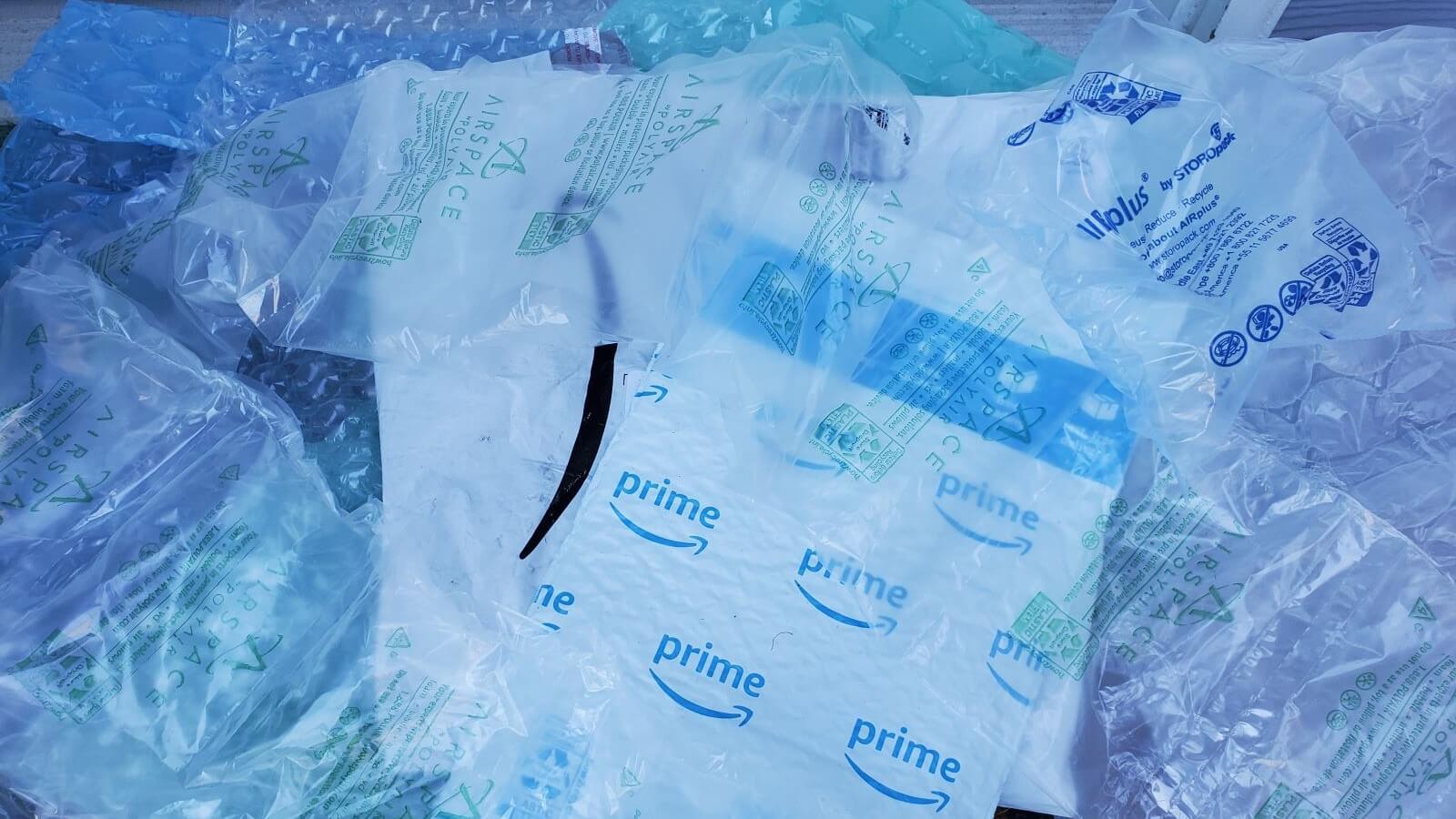If you’ve ever wondered how many packages Amazon delivers, you were right: It’s a lot. Like 7.7 billion packages shipped in 2021 alone. That’s 21 million a day.
And if you’ve ever received a package from Amazon — and let’s face it, who hasn’t? — you also may have wondered: Do they have to use so much plastic? And what happens to all of that plastic film, air pillows, bubble wrap and other plastic stuff?
The answers are: No. And: It’s not pretty.
A planet wrapped in plastic
According to one estimate, in 2021, Amazon generated over 700 million pounds of plastic waste. With that amount of plastic, you could wrap the Earth in plastic air pillows 800 times over.
It’s not hard to see how this adds up. Say you run out of a household item, perhaps disinfectant wipes, so you order more on Amazon. The wipes come in plastic cylinders. Yet the two-pack you order also comes wrapped in a thin gray plastic film. And the two-pack wrapped in film comes encased in more plastic packaging.
Multiply that by the millions of Amazon deliveries happening across the planet every day, and by the end of a year, you get those 700 million pounds.
The problems with plastic
The biggest problem with plastic, of course, is also its chief selling point: It’s so durable that it lasts forever — or pretty darn close to forever, degrading ever-so-slowly (depending on its location and exposure to sunlight) into microplastics.
A small amount of the billions of tons of plastic generated since roughly 1950 gets recycled. A slightly larger amount is incinerated (which is worrisome, given the chemicals released into the air).
The rest is supposed to go to, and stay in, landfills. But it doesn’t work out that way. Instead, researchers keep finding plastic everywhere in the environment — from the deepest point in the ocean to the highest point on Earth.
They also keep finding it in animals, including seabirds, marine mammals and sea turtles. If you’re not a big wildlife lover, I’m afraid that I have bad news for you: Researchers also are detecting plastic in our lungs, our blood and even the breast milk of nursing moms.
The experts are still sorting out the health and environmental effects of all of this plastic. They know that it’s harming and sometimes even killing wildlife. As they study what it might be doing to us, we could take our chances and hope that what’s happening to wildlife isn’t happening to us. Or, we could do the smarter thing, and stop producing, consuming and disposing of so much plastic, starting with the plastic we don’t really need.
What Amazon can do to reduce plastic waste
Amazon is America’s largest online retailer, which means that it’s a big part of the plastic problem. But it also has the resources and tools required to reduce and then eliminate single-use plastic packaging from its business model.
There are, after all, more easily recyclable and biodegradable alternatives to single-use plastic packaging. That’s probably why Amazon has committed to cut single-use plastic packaging in Germany and India.
Why not here in the U.S.?
Ask Amazon to reduce single-use plastic packaging
We’re asking Amazon to reduce and phase out single-use plastic packaging in its deliveries. We hope you will join us by signing our petition.
Rest assured that the action of concerned citizens can make a difference. It’s the key reason why today 1 in every 3 Americans lives in a state with a robust ban of at least one type of single-use plastic.
Major corporations are also coming around, in part due to consumer demand. In February 2022, Coca-Cola (the world’s top plastic polluter, by one estimate) announced a commitment to use refillable or returnable glass or plastic bottles for at least 25% of global beverage sales across its entire brand portfolio by 2030. That’s an important step in the right direction.
As for Amazon, it can’t solve the plastic waste problem all by itself. Yet each time a major company commits to eliminating its plastic waste, it paves the way for another to follow suit.
And in each of these actions, all of us — corporations, governments and individuals — can reduce the amount of plastic waste we’re generating so we can enjoy the cleaner air, parks, streets, beaches and waters that result.
Please join us in urging Amazon to reduce and phase out wasteful single-use plastic packaging.
Thank you.
